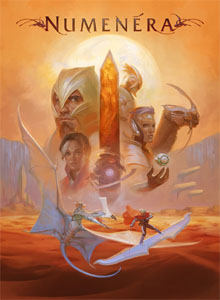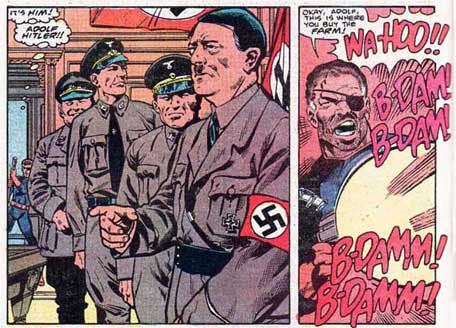 Numenera features player-facing mechanics: Whenever an action requires diced resolution, it’s always the player who rolls the dice. If a PC is being attacked, the player rolls to dodge. If the PC is attacking, the player rolls to hit. There are a lot of advantages to this system, particularly in the ways that it seamlessly interacts with the pool-spend, GM intrusion, and difficulty adjustment mechanics.
Numenera features player-facing mechanics: Whenever an action requires diced resolution, it’s always the player who rolls the dice. If a PC is being attacked, the player rolls to dodge. If the PC is attacking, the player rolls to hit. There are a lot of advantages to this system, particularly in the ways that it seamlessly interacts with the pool-spend, GM intrusion, and difficulty adjustment mechanics.
But the drawback of player-faced mechanics is that they can’t be used to resolve contests between NPCs. Numenera opts for one of two relatively straightforward work-arounds (to be used at the GM’s discretion):
(1) In keeping with other mechanics in the system, the NPC with the highest level automatically succeeds.
(2) If that’s undesirable for some reason, “the GM should designate a player to roll for one of the NPCs. Often, the choice is obvious. For example, a character who has a trained attack animal should roll when her pet attacks enemies.”
The problem with this method is that, because of the way NPC stat blocks and pools work in Numenera, the result doesn’t factor in the NPC’s skill whatsoever: There is no modifier applied to the roll, so an NPC that’s level 2 at attacking has the exact same chance of hitting an NPC opponent as an NPC that has a level 7 attack.
What makes the problem even more vexing is that a large number of character options feature allied NPCs (like the aforementioned trained attack animal).
NPC ALLIES
NPC allies have an effort pool equal to level x 3 per day.
NPC allies also gain one recovery roll per day. This recovery roll can be used as an action at any time, restoring 1d6 + level points to their effort pool.
When rolling for an NPC, adjust the die roll by +1 or -1 per difference in level. For example, a level 5 NPC attempting a level 3 task would gain a +2 bonus to their die roll. The same NPC attempting a level 7 task would suffer a -2 penalty to their die roll.
DESIGN NOTES
These rules are short, simple, and to the point. They present a minor disruption to the purely player-faced mechanics, but without bulking out an NPC to have the same complexity as a PC. (In terms of utility, it’s particularly important that the mechanics don’t actually require a specialized NPC stat block: The effort pool can be easily derived from any existing NPC or creature.)
In actual play, the addition of the effort pool provides just enough interest to make running an NPC ally interesting while the level adjustment to the die roll for NPC vs. NPC actions provides enough distinction between characters that their interactions don’t feel flat or artificial.
These rules can be found in the “House Rules” section of my Numenera system cheat sheet.













